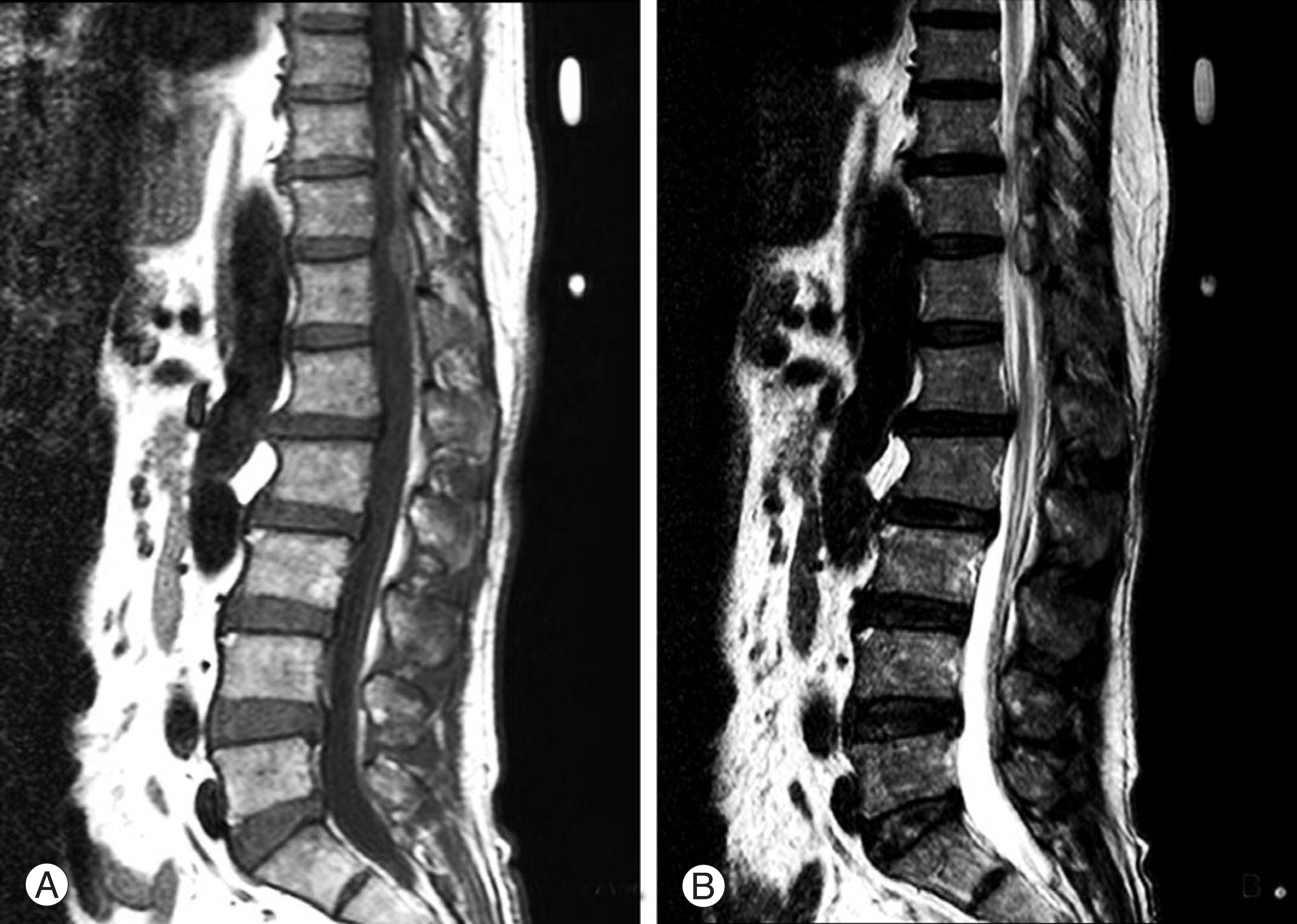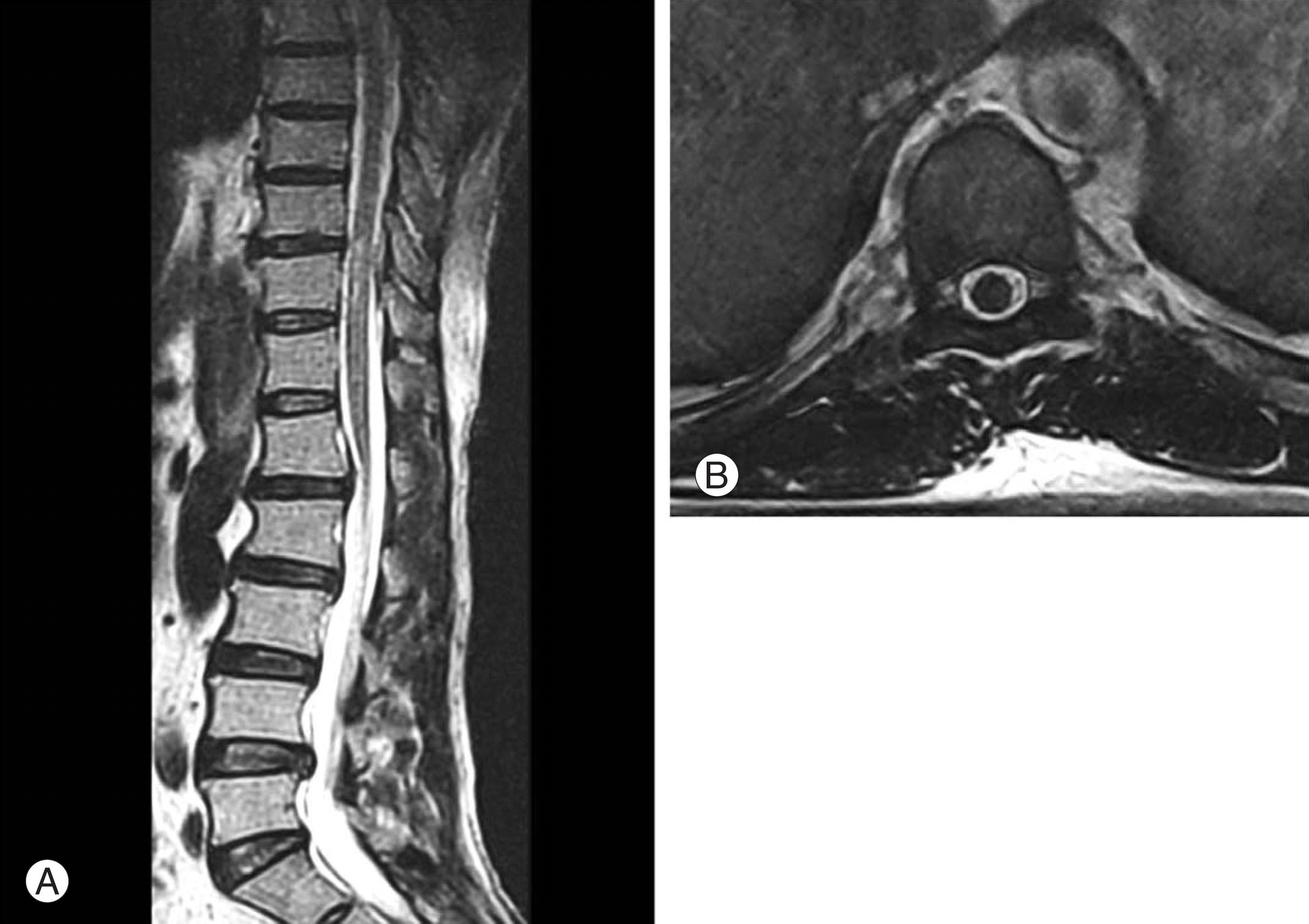Abstract
A spontaneous spinal epidural hematoma (SSEH) is a rare disease that accompanies severe axial pain in the spine with various levels of paralysis depending on the location of the hematoma. A SSEH is mainly caused by a coagulating disorder or anticoag-ulants medication, while certain cases relate this disease with spinal inflammatory conditions. The early diagnosis of a SSEH is important for its treatment. Most cases with neurologic symptoms can be treated with a immediate laminectomy and decompression. If the neurologic symptoms improves within 12 hours, a conservative treatment is effective, however few cases have been reported. We encountered a 59 years old male without a prior medical history suffering from severe back pain and paraplegia due to a SSEH at thoracic vertebrae. The patient was successfully treated conservatively. We report this case with a review of the relevant literature.
REFERENCES
2). Chung HI, Yim MB, Byun IS, Kim IH. Spontaneous spinal epidural hematoma. J Korean Neurosurg Soc. 1978; 7:145–150.

3). Binder DK, Sonne DC, Lawton MT. Spinal Epidural Hematoma. Neurosurgery Quarterly. 2004; 14:51–59.

4). Wittebol MC, van Veelen CW. Spontaneous spinal epidural haematoma. Etiological considerations. Clin Neurol Neurosurg. 1984; 86:265–270.
5). Groen RJ, van Alphen HA. Operative treatment of spontaneous spinal epidural hematomas: A study of the factors determining postoperative outcome. Neurosurgery. 1996; 39:494–508.

6). Lawton MT, Porter RW, Heiserman JE, Jacobowitz R, Sonntag VK, Dickman CA. Surgical management of spinal epidural hematoma: Relationship between surgical timing and neurological outcome. J Neurosurg. 1995; 83:1–7.

7). Wagner S, Forsting M, Hacke W. Spontaneous resolution of a large spinal epidural hematoma: Case report. Neurosurgery. 1996; 38:816–818.

8). Duffill J, Sparrow OC, Millar J, Barker CS. Can spontaneous spinal epidural haematoma be managed safely without operation? A report of four cases. J Neurol Neurosurg Pychiatry. 2000; 69:816–819.

9). Lovblad KO, Baumgartner RW, Zambaz BD, Remon-da L, Ozdoba C, Schroth G. Nontraumatic spinal epidural hematomas. MR features. Acta Radiol. 1997; 38:8–13.
10). Zuccarello M, Scanarini M, D'Avella D, Andrioli GC, Gerosa M. Spontaneous spinal extradural hematoma during anticoagulant therapy. Surg Neurol. 1980; 14:411–413.
Fig. 1.
(A)T1 weighted sagittal image shows epidural masses at T10, T11, T12 level that have homogenous intermediate signal intensity representing acute hematoma. (B) T2 weighted sagittal image shows epidural masses at T10, T11, T12 level that have heterogenous intermediate signal intensity representing acute hematoma.





 PDF
PDF ePub
ePub Citation
Citation Print
Print



 XML Download
XML Download